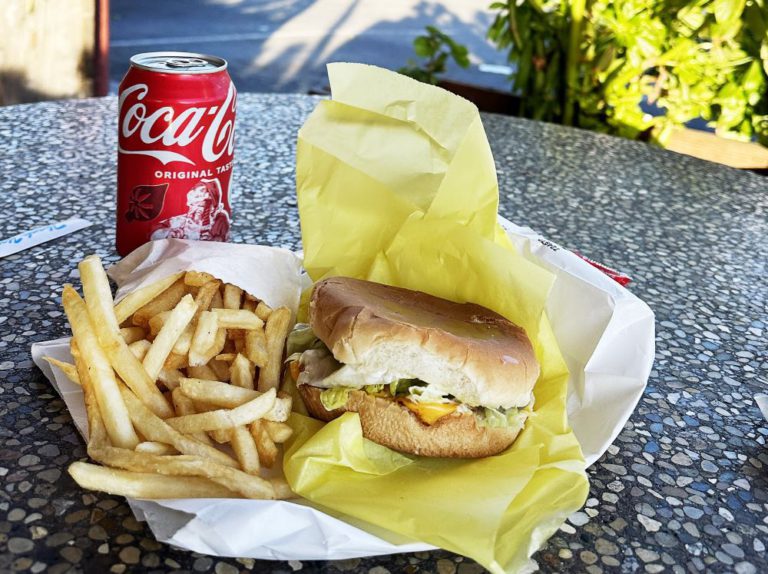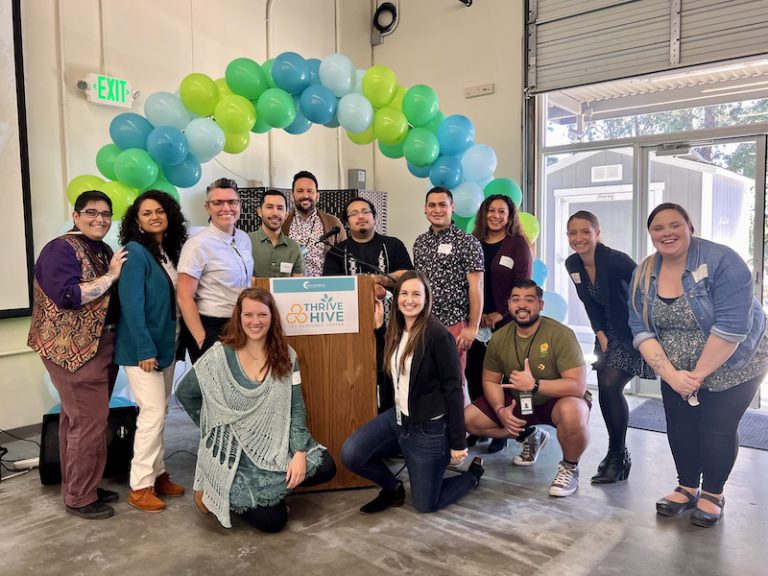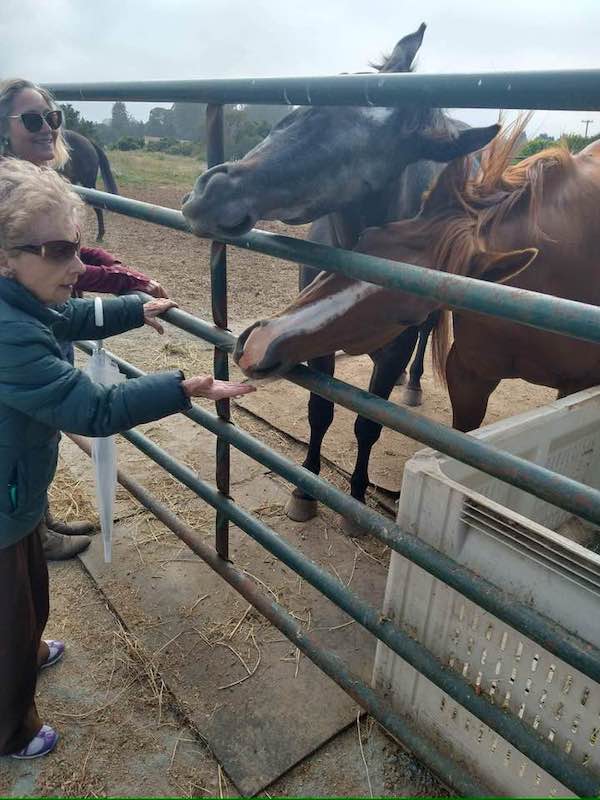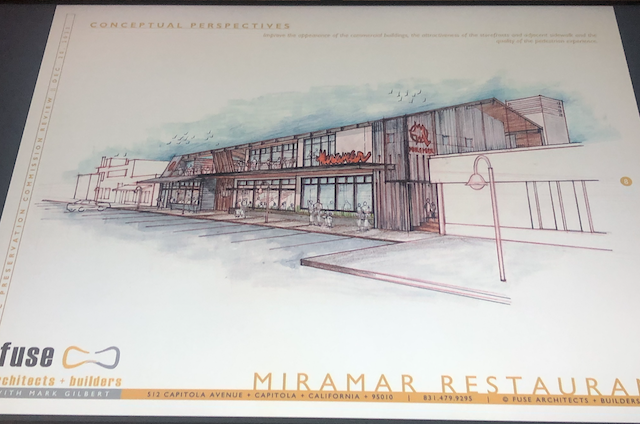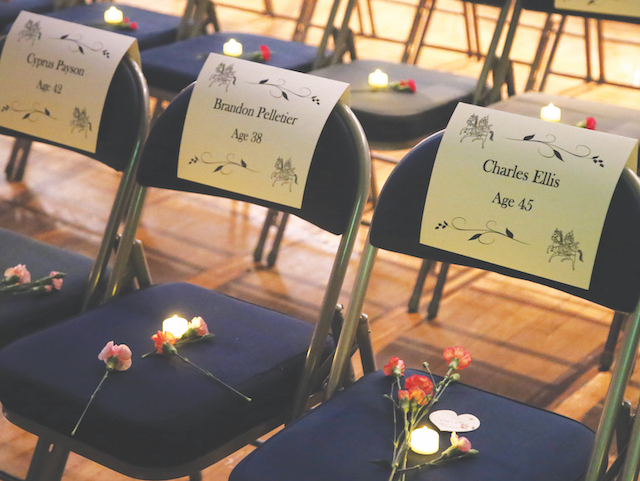Whether its local youth seeking a safe place to grow and thrive, or refugees from halfway around the world looking for a better life, these organizations are serving as community safety nets and helping people feel at home here.
Encompass Community Services
This year, Encompass is celebrating 50 years of offering behavioral health, early childhood education, and housing support services in Santa Cruz County.
Encompass CEO Monica Martinez has been at the helm for ten years now, having previously served as executive director for Housing Matters. 2024 is looking bright for the organization, Martinez says, as long-planned projects are underway. The Santa Cruz Gives fundraising drive helps organizations with their ‘Big Idea’ project for the next year. Encompass plans to use funds to expand its Thrive Hive in 2024.
The Thrive Hive is a drop-in resource center located at its Santa Cruz facility that provides services for individuals involved in its Transition-Age Youth (TAY) program. The center will have an outdoor area into a “healing garden” where young people can grow vegetables, spend time outside and engage in activities like meditation.
“As you can imagine, youth who are caught up in systems like the foster care system, the probation system or experiencing homelessness often don’t have a stable and consistent resource where they can kind of have a one-stop shop access to everything that they need,” Martinez says.
Martinez says that the number of people seeking services has increased since the Covid pandemic and wants the community to know that Encompass is a safe place for youth to come get connected with services or even just hang out.
“We have really worked hard to create a space that is ‘no wrong door.’ Anybody who comes in can seek services there. Whether they are experiencing homelessness or coming out of the probation system,” Martinez says.
Encompass also has plans to break ground on a new behavioral health center in South County for 2024. The organization recently got its accreditation from the Commision on Accreditation of Rehabilitation Facilities (CARF) as a provider of clinical behavioral and rehabilitation services.
“We don’t want to be a kind of second-standard, sub-tier level of services. We want people to have the quality that they deserve. We want people to be treated with dignity and respect,” Martinez says.
Santa Cruz Welcoming Network
The Santa Cruz Welcoming Network has been providing comfort and support for people who seek asylum from war zones or persecution since 2019.
The all-volunteer network has helped individuals from places like Ukraine, Afghanistan, Central America and Colombia. Volunteers connect personally with each asylum seeker and assist them in navigating the immigration process, securing work and housing, and getting enrolled in school. They have 100 volunteers in the county working to help refugees feel like they belong.
Paul Johnston is a retired sociology professor and volunteer with the Welcoming Network. He says that the organization started when members of Holy Cross Church in Santa Cruz came together to help a refugee seeking asylum. The word spread among immigrant communities and the group added volunteers to help with the growing need.
“I think a lot of people feel a great deal of compassion and, more than that, sometimes anger and frustration about what’s happening on our border and what’s happening to people who are trying to make their way through Latin America toward our border,” Johnston says. “It’s just horrifying.”
The organization is fundraising for 2024 to continue providing basic assistance to asylum seekers and to build a legal defense fund. The legal process for asylum seekers is long and costly, with attorney and application fees in the thousands of dollars. The Welcoming Network partners with other community organizations such as Catholic Charities to match refugees with legal aid.
Johnston says that the last few years have been a learning experience for the volunteers. They don’t have a traditional staff and rely solely on individuals willing to give their free time. With the federal government now considering curbing the intake of asylum seekers at the U.S.-Mexico border, Johnston feels their work is now more urgent.
“We have to turn to each other and I think that’s part of the secret of what’s made everybody develop such competency. Also, Santa Cruz has a lot of retired folks with a lot of skills, who are looking for meaningful stuff to do,” Johnston says.
Other Community Organizations:
Association of Faith Communities
Association of Faith Communities is a network of over 30 faith communities in the area that helps individuals experiencing homelessness. The organization shelters over 150 individuals annually through their Faith Community Shelter and Safe Spaces parking program. 50% of program participants move to permanent housing, according to AFC. The group also distributes over 11,000 pairs of new socks annually and provides over 1,500 hot showers annually with our mobile shower trailer.
For its Big Idea in 2024, AFC is raising money to provide laundry services for their more than 150 program participants. AFC is also currently working to develop an 8-bed family shelter that will provide families with private rooms and bathrooms.
Community Bridges
Community Bridges (CB) is a nonprofit that runs 10 programs in the county to provide essential services for families experiencing financial difficulties. The organization provides access to resources like food distribution, health education and financial assistance. In the last year, CB has served 22,000 community members, 80% of whom earned incomes below the federal poverty level.
For its fundraising drive for 2024, CB is raising money to expand its Elderday Adult Day Health Care program, which empowers elders to live with greater independence and dignity. The program supports indoor and outdoor activities at a new facility in Watsonville, including physical activities and mental stimulation for elders with dementia.
The Friends of the Santa Cruz Public Libraries
The Friends of the Santa Cruz Public Libraries support the Santa Cruz Public Libraries through fundraising, volunteer services and advocacy. The organization’s goal is to help enrich county residents through accessible and diverse library programs.
For Its Big Idea in 2024, FSCPL is fundraising for its Boundless Minds program which provides access to books, materials and programming to 450 individuals incarcerated in the county jail. About 70% of incarcerated individuals read at 3rd grade level or below and literacy programs can help them not only read at a higher level, but create connections that help prevent recidivism. The program will also provide books, materials and library space for the development of a book collection for Juvenile Hall.
Grey Bears
Grey Bears is committed to improving the health and well being of local seniors through food and meal deliveries, volunteerism, resource conservation and recycling programs. U.S. Census data shows Santa Cruz County has the fastest-growing senior population in California.
For its fundraising drive in 2024, Grey Bears is working to create the Santa Cruz County Senior Night Out series, which will organize events to foster social connection. Grey Bears is partnering with other community organizations to bring about 12 monthly events in 2024 that focus on maintaining healthy bodies and minds.




